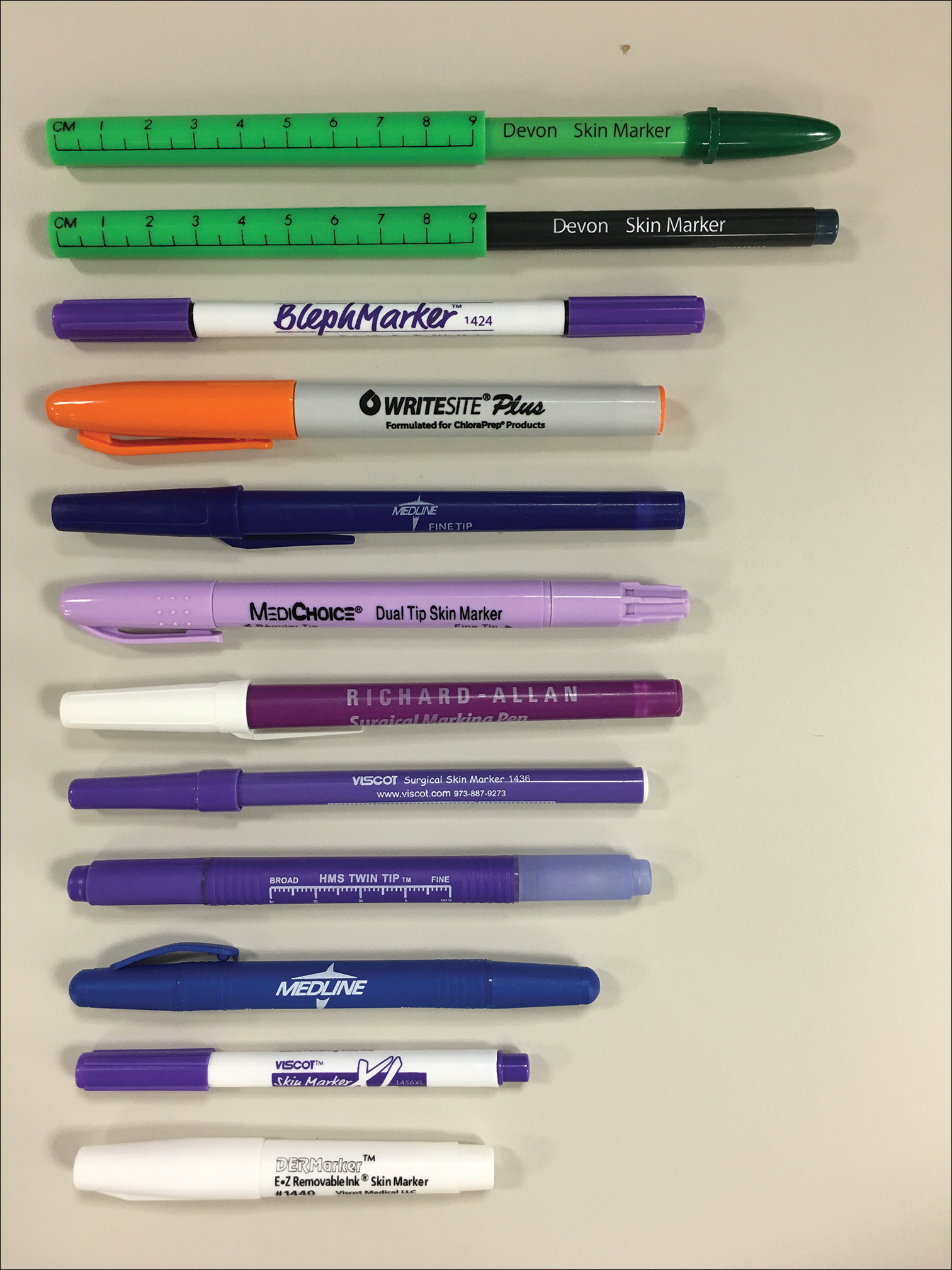Blepharoplasty, or surgical manipulation of the upper and/or lower eyelids, is a commonly performed cosmetic procedure to improve the appearance and function of the eyelids by repositioning and/or removing excess skin and soft tissue from the eyelids, most often through external incisions that minimize scarring and maximize the aesthetic outcomes of the surgery. Therefore, the placement of the incisions is an important determinant of the surgical outcome, and the preoperative marking of the eyelids to indicate where the incisions should be placed is a crucial part of preparation for the surgery.
Preoperative marking has unique challenges due to the dynamicity of the eyelids and the delicate nature of the surgery. The mark must be narrow to minimize the risk of placing the incision higher or lower than intended. The mark also must dry quickly because the patient may blink and create multiple impressions of the marking on skinfolds in contact with the wet ink. Fast drying of the ink used to create the marks improves the efficiency and clarity of the presurgical planning.
We present data on the performance of the various blepharoplasty markers regarding drying time and ink spread width based on an evaluation of 13 surgical markers.
Methods
Eleven unique fine tip (FT) markers and 2 standard tip (ST) markers were obtained based on their accessibility at the researchers’ home institution and availability for direct purchase in small quantities from the distributors (Figure 1). Four markers were double tipped with one FT end and one ST end; for these markers, only the FT end was studied. The experiments were conducted on the bilateral upper eyelids and on hairless patches of skin of a single patient in a minor procedure room with surgical lighting and minimal draft of air. The sole experimenter (J.M.K.) conducting the study was not blinded.

Figure 1. Blepharoplasty markers included in the study (top to bottom): Devon Surgical Skin Marker, Dual Tip (Medtronic); Sterile Devon Surgical Skin Marker, Fine Tip (Medtronic); Sterile BlephMarker (Viscot Medical, LLC); WriteSite Plus Surgical Skin Marker (Aspen Surgical, Inc); Sterile Fine Tip Skin Marker (Medline Industries, Inc); MediChoice Dual Tip Sterile Skin Marker (Owens & Minor, Inc); Richard-Allan Fine Tip Skin Marker, Sterile (Aspen Surgical, Inc); Ultrafine Tip Traditional Ink Marker (Viscot Medical, LLC); Twin Tip Surgeons Pen (Hospital Marketing Services Co, Inc); Sterile Dual Tip Skin/Utility Marker (Medline Industries, Inc); Sterile Mini Ultrafine Tip XL Prep Resistant Ink Marker (Viscot Medical, LLC); DERMarker E-Z Removable Ink Mini Skin Marker (Delasco, LLC). The Skin Marker, Fine Tip (Cardinal Health) is not pictured.
The drying time of each marker was measured by marking 1-in lines on a patch of hairless skin that was first cleaned with an alcohol pad, then dried. Drying time for each marking was measured in increments of 5 seconds; at each time point, the markings were wiped with a single-ply, light-duty tissue under the weight of 10 US quarters to ensure that the same weight/pressure was applied when wiping the skin. Smudges observed with the naked eye on either the wipe or the patients’ skin were interpreted as nondry status of the marking. The first time point at which a marking was found to have no visible smudges either on the skin or the wipe was recorded as the drying time of the respective marker.
Ink spread was measured on clean eyelid skin by drawing curved lines along the natural crease as would be done for actual blepharoplasty planning. Each line was allowed to dry for 2 minutes. The greatest perpendicular spread width along the line observed with the naked eye was measured using a digital Vernier caliper with 0.01-mm graduations. Three measurements were obtained per marker and the values averaged to arrive at the final spread width.

